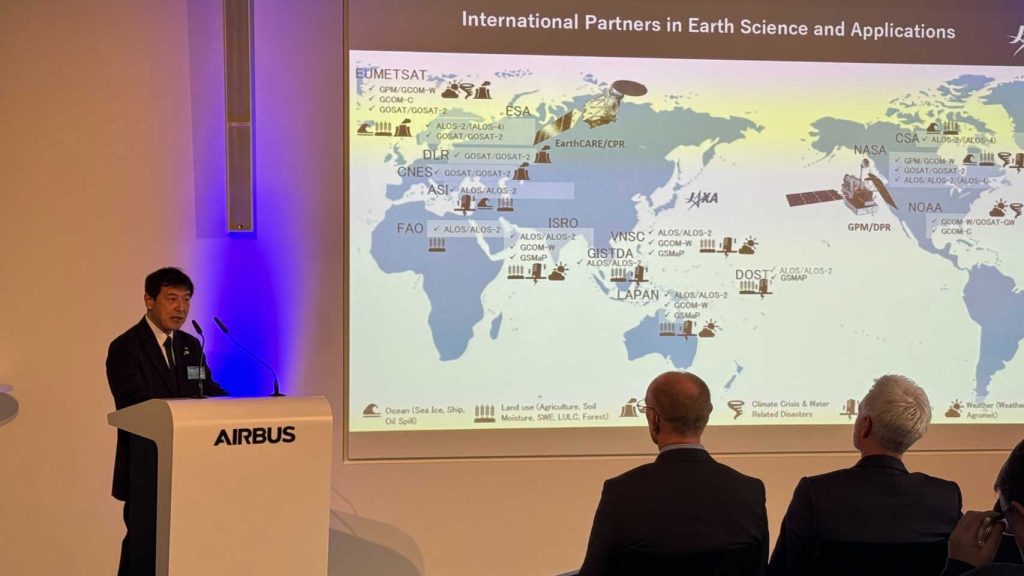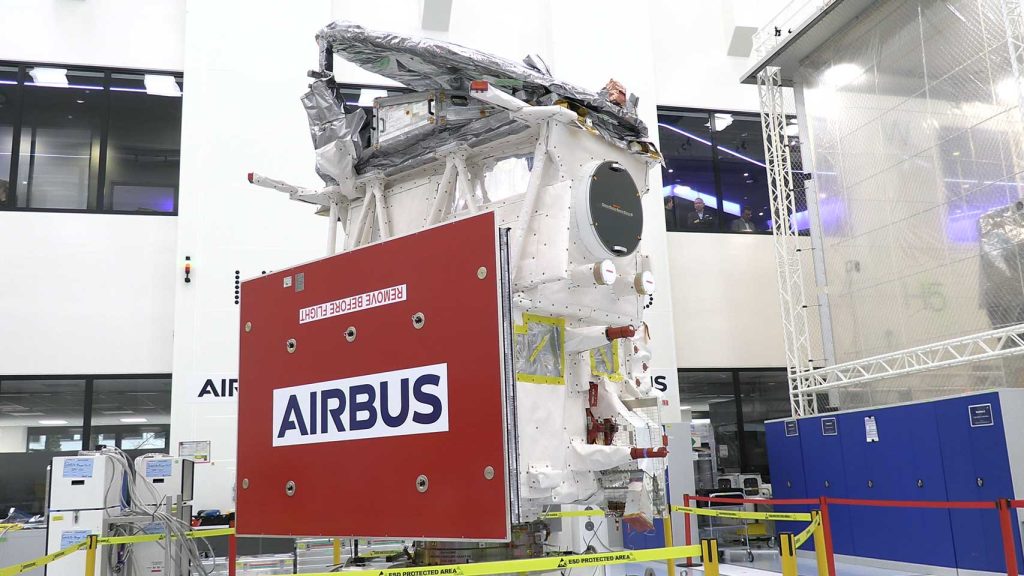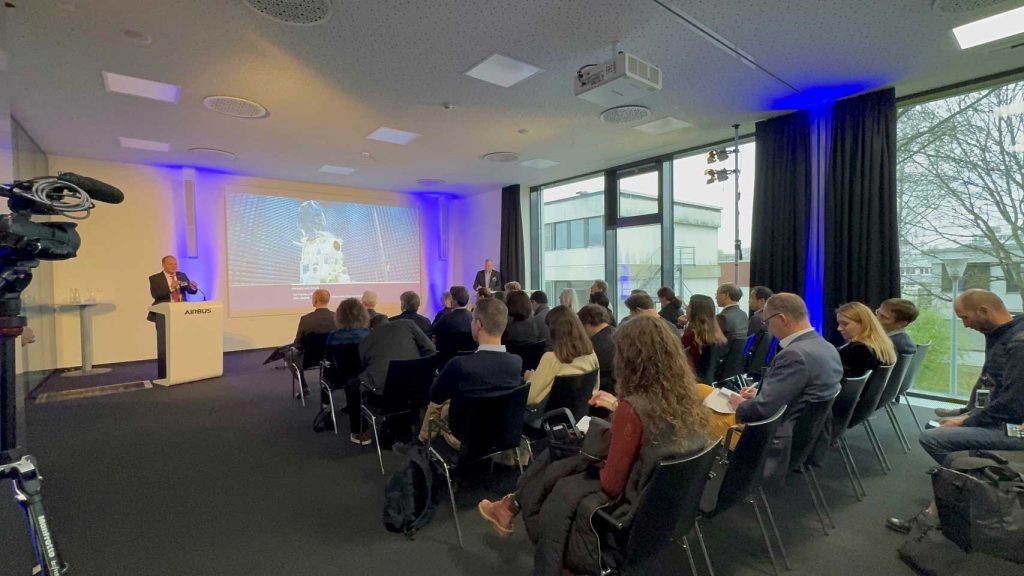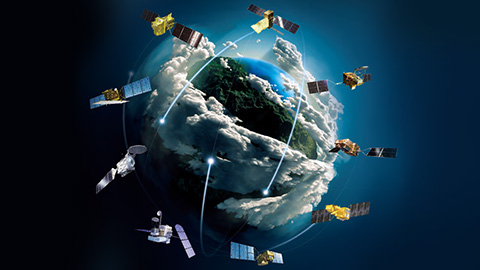News
2024.02.01 Thu
Media event of viewing EarthCARE satellite
On February 1st, 2024, the media event of viewing the Earth Cloud Aerosol and Radiation Explore “EarthCARE” satellite was held at the Airbus facilities in Germany. The Airbus has developed the EarthCARE satellite as the European Space Agency (ESA)’s prime contractor.



The EarthCARE satellite has completed its final test and is scheduled to be launched by SpaceX Falcon 9 at Vandenberg Space Force Base in California, USA in May 2024. Before the spacecraft is shipped to the launch site, the media could have the last chance to see the EarthCARE satellite in Europe. At the event, ESA, JAXA and Airbus explained the purpose and significance of the EarthCARE mission, the satellite’s configuration, and the history of its development, and an opportunity was provided to enter the cleanroom and see the spacecraft up close.
The event attracted a large number of media from all over Europe and Japan, and gave great expectations for the future outcomes of EarthCARE. JAXA’s Vice President, Koji Terada, said “Despite the mission being proposed as a concept over 20 years ago, EarthCARE is more relevant than ever. I am deeply impressed that the mission is based on such excellent and visionary science requirements. We are very proud of offering the Cloud Profiling Radar (CPR) jointly developed with NICT(National Institute of Information and Communications Technology), JAXA’s partner.”
Earth Cloud Aerosol and Radiation Explorer/Cloud Profiling Radar (EarthCARE/CPR)
Earth Cloud Aerosol and Radiation Explorer (EarthCARE) is an Earth observation satellite developed jointly by Europe and Japan. Four onboard sensors (Cloud Profiling Radar, Atmospheric Lidar, Broad-Band Radiometer and Multi-Spectral Imager) observe clouds and aerosols (small particles suspended in the atmosphere) globally and contribute to improving the accuracy of climate change predictions. The Cloud Profiling Radar (CPR), which Japan was responsible for its development, observes the structure and height of clouds by transmitting millimeter-waves toward the Earth from the satellite orbit, and receiving radio waves scattered by cloud particles. In addition to observing clouds with higher sensitivity than previous satellite-borne cloud radars, CPR is the world’s first satellite-based radar capable of measuring the upward and downward flow velocity within clouds.
Search by Year
Search by Categories
Tags
-
#Agreement
-
#Application
-
#Award
-
#Climate
-
#DAICHI (ALOS)
-
#DAICHI-2 (ALOS-2)
-
#DAICHI-3 (ALOS-3)
-
#DAICHI-4 (ALOS-4)
-
#Disaster Management
-
#EarthCARE/CPR
-
#Education
-
#GOSAT-GW
-
#GPM/DPR
-
#HIMAWARI
-
#IBUKI (GOSAT)
-
#IBUKI-2 (GOSAT-2)
-
#KIZUNA (WINDS)
-
#SHIKISAI (GCOM-C)
-
#SHIZUKU (GCOM-W)
-
#Tour and Exhibits
-
#TSUBAME (SLATS)
Related Tags
Related News
- News 2023.10.30 Mon
- News 2023.09.20 Wed
- News 2023.07.14 Fri
- News 2023.06.05 Mon
- News 2023.05.11 Thu









